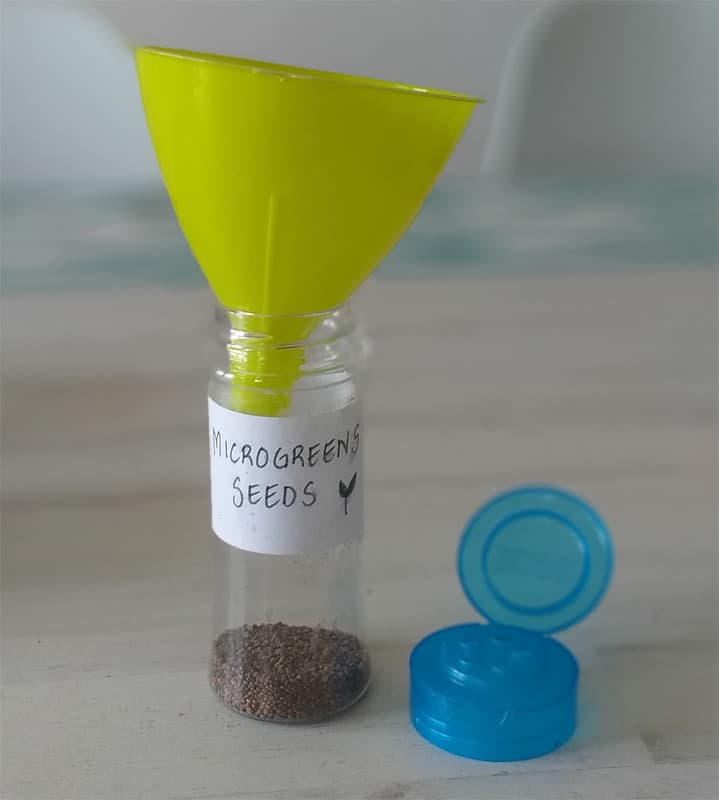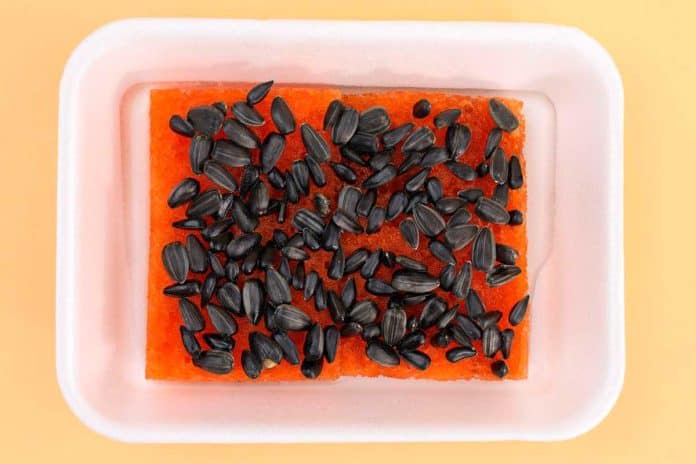When it comes to growing microgreens, getting seed density right is one of the more frequent causes new growers find challenging. There are plenty of misconceptions about seed density, and with different information shared on the internet and various forums, it can be challenging to know what is correct.
The good news is that we will be helping you determine the seed density for microgreens. We have experienced issues with seed density firsthand and have adjusted and found out what works, and what does not.
Seed density varies significantly from microgreen to microgreen. Generally, in a 10 by 20-inch tray, most microgreens handle from 12 to 25 grams of seed. This range is wide because the correct density depends on the type and size of the seeds. A sparser seed density gives in general a better consistency and healthier growth.
So what is the seed density required for each particular microgreen? We will discuss just that in this article.
What Is Seed Density, And How Can I Use It?
Seed density for microgreens refers to the number of seeds used within a particular space constraint. For this article, we use grams as the measuring tool for the volume of seeds, and inches for the growing area. Taking Arugula in this context, we can have 20 grams of weighted Arugula seeds in a tray of 10 inches wide by 20 inches long.
How Important Is Seed Density?
Getting seed density for microgreens correct is important as it can be a decisive factor for being successful with your growth.
One of the most common issues with growing microgreens is facing mold in your crop. If you place too many seeds close to each other, the roots do not have enough room in the tray, and there will be overpopulation. It means there is not enough room for adequate airflow and drainage in the soil. If the airflow is poor in the environment, mold will most likely start to grow.
Following the guidelines for how many seeds to use is hence relevant!
Does Seed Density Affect Growth?
As mentioned, giving enough space when planting your seeds, is important to avoid having issues like mold, and to get good growth. When you start having problems like this, it can be difficult to rescue the crop, and you need to start over.
However, bear in mind that successful growth is not only dependent on seed density. The environment you grow in, the harvest stage, and the seed source also plays an important part.
How Much Seed Should I Use For Microgreens?
Each microgreen has different seed density requirements as they come in different sizes and shapes. A rule of thumb is that for smaller seeds such as arugula, radish, broccoli, and kale, around 20 grams (1/4 cup) is sufficient.

For larger seeds like sunflower, pea, and corn, the weight of the seeds will be significantly higher. As the seed density for these types of microgreens varies vastly, we refer to the exact guidance provided in our list below.
For the best outcome, spread the seeds evenly across the tray, without creating piles and having them layered and overlapping. For this we re-use old bottles that used to have spices in it. It´s a simple and easy solution that works very well for us.
You may not be successful at your first attempt but you should not give up. Adjust your measurements, and eventually, you will get there!
In this article, let us guide you through the seed density for some of the more popular microgreens to grow at home.
The microgreens we will be covering in detail:
- Arugula
- Beet
- Cabbage
- Sunflower
Arugula
Arugula microgreens are known for their tangy and peppery taste. Unlike most microgreens, they need a lot of space to grow properly. In a 10/20 tray, there should be 20 grams of arugula seeds. Seed density is especially important for this kind, as they are mucilaginous (meaning they will get jelly-like), and put out roots quickly. They are more prone to grow mold if they are overlapping and do not get enough airflow.
Learn more about arugula microgreens.
Beet
Beet microgreens have the advantage of a unique sweet and earthy taste that truly sets itself apart from the crowd. Beet microgreens will be your best bet when paired with sweet-tasting salads and garnishes in bright, bubbly flavors.
The seed density for beet microgreens is a bit more tolerant than arugula. They are pretty efficient, holding up to 25 grams of beet seed in a 10/20 tray. They can benefit from being soaked for a couple of hours before planting to speed up germination.
Learn more about beet microgreens.
Cabbage
Cabbage microgreens are renowned for their mild taste and versatility. As such, it makes its way into many microgreen dishes. With that aside, what is the seed density for cabbage microgreens?
Cabbage microgreens’ seed density is slightly less than beet microgreens. For optimal seed density in a 10/20 tray, you should sprinkle around 20 grams for balanced consistency.
Learn more about cabbage microgreens.
Sunflower
Sunflower microgreens are as bright and beaming as the sun, crunchy and nutty. Aside from that, did you know that sunflower microgreens have one of the most efficient space to grams ratios in seed density for microgreens?
The seed density for sunflowers is based on DRY seeds. We mention this because these seeds should be soaked before planting. Using 125 grams of seeds in a 10/20 tray is a good reference. That alone beats the cabbage and beet combined! The sunflower seeds are much larger than most other ones, and hence the weight is also higher.
Learn more about sunflower microgreens.
Seed Density For Other Types Of Microgreens
Was your favorite microgreen not among the 4 we mentioned above? Not to worry. We have prepared a bigger seed density list with the more popular microgreens to grow at home.
| Microgreen seed | Total seed weight (grams) |
|---|---|
| Alfalfa | 20 g |
| Amaranth Red Garnet | 15 g |
| Arugula (Rocket) | 20 g |
| Basic Salad Mix | 15 g |
| Basil (Genovese) | 10 g |
| Beet (Dark Red) | 25 g |
| Borage | 20 g |
| Broccoli | 20 g |
| Brussels Sprouts | 25 g |
| Carrot | 15 g |
| Cauliflower | 42.5 g |
| Cilantro (Split seed) | 10 g |
| Clover (Crimsom) | 25 g |
| Corn (Yellow Popcorn) | 200 g |
| Cress | 15 g |
| Dill | 15 g |
| Kale (Red Russian) | 25 g |
| Kohlrabi | 20 g |
| Lettuce | 10 g |
| Marigold | 3 g |
| Melon (Cantaloupe) | 50 g |
| Mustard | 12 g |
| Nasturtium (JewelMix) | 10 g |
| Onion | 25 g |
| Orach (RubyRed) | 20 g |
| Pak Choi | 20 g |
| Pea | 250 g |
| Radish (Daikon) | 25 g |
| Radish (HongVit) | 25 g |
| Radish (Rambo) | 25 g |
| Radish (China Rose) | 25 g |
| Red Cabbage | 20 g |
| Red Clover | 25 g |
| Red Swiss Chard | 25 g |
| Red Veined Sorrel | 3 g |
| Sage | 5 g |
| Shiso (Green) | 15 g |
| Spicy Salad Mix | 15 g |
| Sunflower | 125 g |
| Tatsoi | 20 g |
Summary
Seed density can be a challenging aspect when growing microgreens at home. It is an important variable to consider, and we always advise you to check the recommended amount before you start sprinkling the seeds on your growing medium.
Remember that seed density varies from type to type. It can be tempting to add a bit more seeds believing that the growth will be more extensive, but as a result, a lack of airflow can easily destroy your microgreens and invite mold and fungi to feast on your crop.
We hope you find this seed density guide useful. For more information about how to grow these microgreens, check out the section Microgreens Types.


